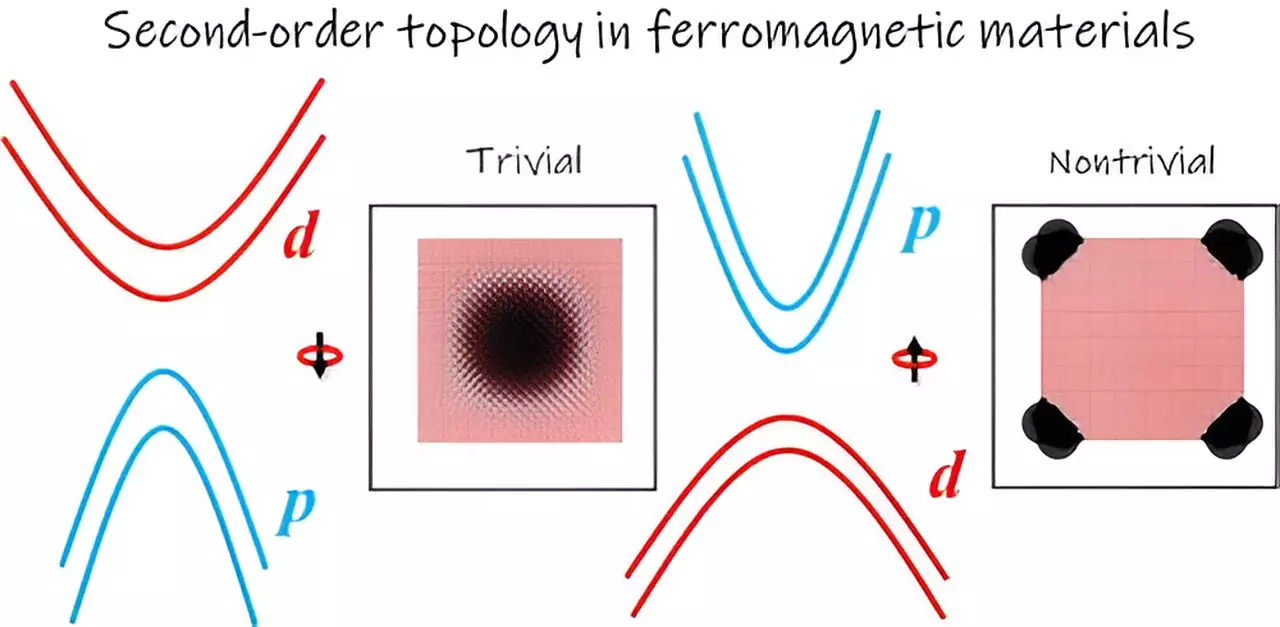In recent years, the field of spintronics has gained significant attention for its potential to revolutionize information technology by utilizing not just charge, but also the spin of electrons for data processing and storage. A major breakthrough has emerged from researchers at Monash University’s FLEET Center, who have unveiled a generalized framework for understanding intrinsic magnetic second-order topological insulators. These materials, which include the likes of CrI3, Cr2Ge2Te6, and VI3, promise to play a pivotal role in the evolution of spintronic devices.
Topological insulators are distinctive materials where the interior remains insulating while the surface can conduct electricity. This property leads to a unique set of behaviors driven by surface states that are resilient against impurities and defects. The current study highlights second-order topological insulators that host (m-2)-dimensional boundary states within m-dimensional materials, providing a novel pathway to explore electronic states that could enhance the functionality of future electronic devices.
One of the significant challenges in working with intrinsic ferromagnetic semiconductors lies in their strong electron correlations. These materials often exhibit such pronounced interactions between electrons that they behave as atomic insulators, lacking the topological properties necessary for effective spintronic applications. This poses a critical question: How can one bridge the divide between strong electron correlation and topological functionality within magnetic materials?
Dr. Zhao Liu and Professor Nikhil Medhekar, the masterminds behind this research, embarked on finding a solution to this conundrum. Their efforts led to the discovery of an inverted orbital order form in certain intrinsic ferromagnetic semiconductors, a situation that could fundamentally alter the landscape of material properties.
The study reveals how the interaction between p orbitals from ligand anions and d orbitals from metal cations can form an inverted orbital configuration—a groundbreaking insight. Typically, in ferromagnetic semiconductors, p orbitals are of lower energy than d orbitals, creating a standard arrangement where p orbitals facilitate super-exchange interactions between d-shell cations. However, the researchers found scenarios where p orbitals possess higher energy than their d counterparts, resulting in this inverted p-d orbital arrangement.
Such a shift in the energy landscape leads to the potential for nontrivial and trivial topological phases based on the orientation of the orbitals involved. This discovery could shift our understanding of how to engineer materials with desired electronic properties and functionalities directly impacting the development of advanced spintronic devices.
Through a combination of advanced density-functional theory calculations and wave function symmetry analysis, the research team identified promising candidates for intrinsic magnetic second-order topological insulators: 1T-VS2 and CrAs monolayer. Each of these materials possesses unique lattice structures—hexagonal for 1T-VS2 and square for CrAs—and both exhibit the critical inverted p-d orbital patterns necessary for nontrivial topology in their spin-up channels.
The experimental implications of these findings indicate that research can go beyond theoretical predictions. Utilizing spin-polarized scanning tunneling microscopy, researchers can detect the localized states at the corners of materials, enhancing our ability to probe and manipulate these novel states effectively.
The implications of this groundbreaking study extend beyond just intrinsic magnetic second-order topological insulators. The researchers suggest that these principles might also be applicable to Kondo insulators, which involve d and f orbitals playing similar roles. The identification of second-order topological Kondo insulators represents an exciting frontier that could yield further advancements in spintronics.
As the demand for faster and more efficient data processing technologies rises, integrating concepts from topology and magnetism could pave the way for innovative materials capable of harnessing quantum properties for practical applications. The exploration of these materials will not only deepen our understanding of spintronics but also potentially lead to the next generation of electronic devices that leverage the unique characteristics of spin and topology.
The research from Monash University offers a promising framework for advancing the material science community’s efforts to integrate topological insulators with magnetic properties, evoking excitement about the future potentials in this rapidly evolving field.

